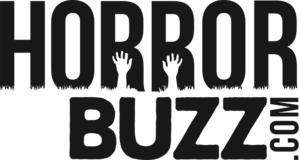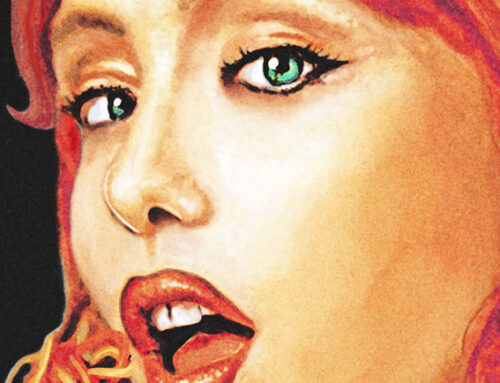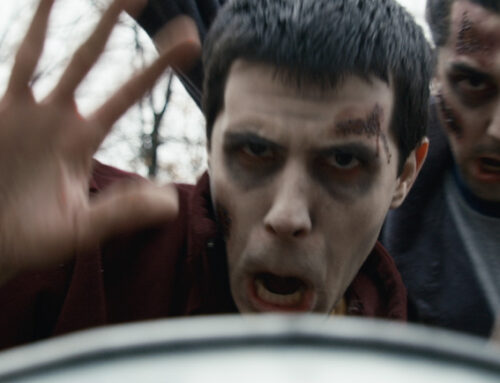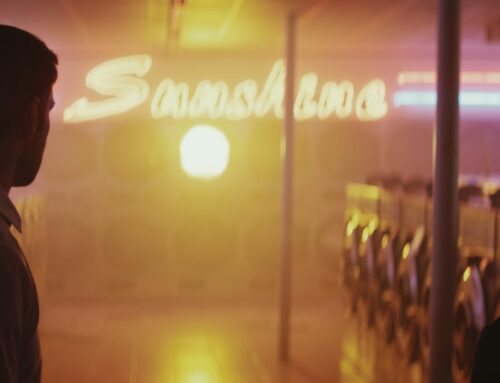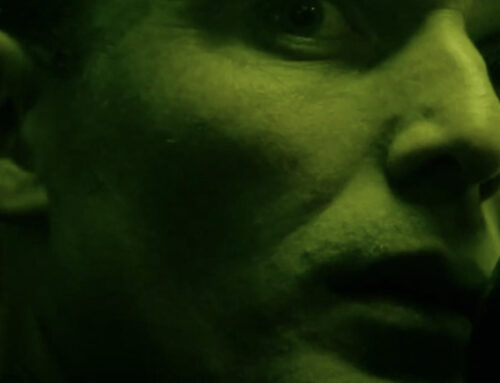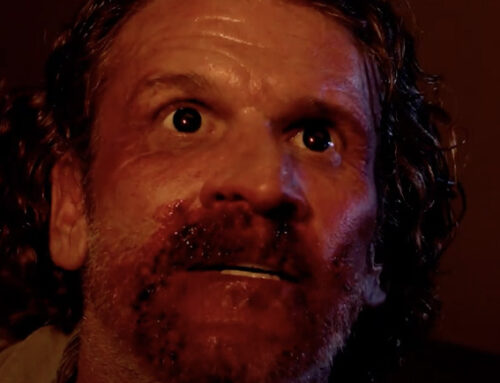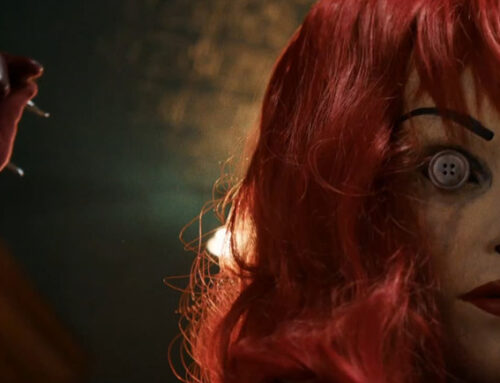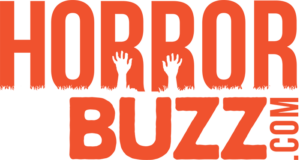Coming off of his second Marvel movie director Scott Derrickson opted to tell a more intimate, frightening tale with The Black Phone. Based on a short story by Joe Hill, (Stephen King’s son) it is the story of a troubled teenager, Finney, who lives in the Denver suburbs with the looming threat of his alcoholic father, bullies, and The Grabber (Ethan Hawke). At the center of a recent crime spree, The Grabber abducts teenage boys and eventually murders them. Soon Finney finds himself trapped in The Grabber’s basement. This time though, things go a bit differently as The Grabber’s past victims begin communicating with his most recent acquisition through a disconnected black phone in hopes of guiding Finney to escape.
We had the chance to talk with Derrickson over the phone on his most recent film. The conversation is below.
Norm (N): I am really happy to talk to you. Um, The Black Phone was easily one of my favorite films of the year. Um, it was just really good.
Scott Derrickson (SD): Thank you so much.
N: Can you talk to me about how the project came together?
SD: I had read Joe’s short story when it was first published, like, 17 or 18 years ago. And I always felt, um, that The Black Phone was a great idea for a movie. When I started working with Cargill, my writing partner, back in 2011 I gave him the short story. We’ve talked for years about trying to do it. We could never really figure out how to do it. And, uh, and then when I stepped of off, uh, the Dr Strange sequel I had been in therapy for a couple of years really dealing with my early childhood and, and, and, and just growing up in North Denver and the violence in my home, the violence in my neighborhood, all of that stuff. And, and I felt like I had rich material for storytelling and when I thought about combining my own kind of biographical history and setting and people I knew with Joe’s story, The Black Phone, it was kind of a “Eureka!” moment. And, uh, and that’s really what the movie is. It’s a combination of those two things.
N: What really seems to work is, and anchors the movie with some heart, is the relationship that the two children have, facing just pretty much everything that’s going on. Can you talk to me about how biographical that was as far as, you know, like, like, how much of that was biographical, how much of that was Joe–Joe’s story?
SD: The, it was really neither. Um, Joe’s story had a sister mentioned but she didn’t really play a role in it, she was older. I had an older sister and older brother that I wasn’t super close to, um, who, you know, the way that Gwen came about was as we constructed the story, you know, I just felt like we’ve got to have a girl in this. And, you know, and it, and I didn’t want to put a girl in it just to be a girl. I felt like the whole movie was missing something really, really basic. And, and so, the idea, you know, Cargill and I came up with the idea of having a younger sister. You know, this, this, uh, this 10 or 11 year old girl who, who was the strongest of all the boys and men that surround her, you know? And, and has, you know, the, this, this gift and, and this incredible strength and this foul mouth and, you know, we just, Cargill, my writing partner, wrote the best description line in when, when she’s introduced on page two of the screenplay it says Gwen is “the sunshine in the apocalypse,” which I just love, you know.
N: (laughs)
SD: So, so it was, it was almost like I felt that the story that we were outlining was really good but it, but it didn’t have a soul and it needed a soul and Gwen is the soul of the movie.
N: Yeah, no question. Um, can you talk to me about how Ethan Hawke got involved and, and why is, why did he choose to play the villain?
SD: Well, I didn’t write it for Ethan and once I was finished with it I thought “god, he’d be really good” so I called him, told him I had this script and I said “You’re probably not gonna want to play this role. A, A because he’s a pedophile serial killer and B, uh, he wears a mask the whole time,” you know. And he laughed and he said “Look, I probably won’t play it because I really don’t play villains.” And it had never occurred to me until that time, until he said that, that gosh, yeah, I couldn’t think of a single vil–like, straight villain role that Ethan had played. And so I sent him, he said “But send it to me anyway, I’ll read it,” you know. So I sent him the script and I went to bed. And when I woke up in the morning there was a voicemail on the phone of Ethan, in the voice of The Grabber, reading one of the lines from the script.
N: (laughs)
SD: It was a very creepy message. So, when I got that I knew that I knew that was his way of saying “I love this, I’m in.”
N: Wow. And why, why does that work? Why did the casting of Ethan Hawke as the villain work?
SD: I th–you know, I just think that Ethan and, I think, I think part of it honestly is, is Ethan, where Ethan is in his career. You know, he’s at a really fearless juncture right now which is the place where actors can, can crash and burn or they can take roles that push them into higher stratospheres of creativity and, and he’s been doing the latter, you know, for a couple years now. And, uh, and I think in this case, you know, he really understood the tradition of acting from behind a mask. It’s a long theater tradition and I think that when he saw the masks and saw how scary they were I think it liberated him to construct a very emotionally complex character, um, where he didn’t always have to always try to be scary. The mask did that job. The Grabber used the masks so that he would be perpetually intimidating and frightening, but for the most part what he’s expressing is, are things that are, that are eerie and strange and creepy and complex and that just makes him all the more terrifying.
N: And speaking of the mask, how did you land on that, I mean, how many designs did you go through before landing on that particularly disturbing face?
SD: Not, not many in terms of the, the, the initial design. I came up with the idea of three masks with, that, that’re split in the middle. I like the idea of The Grabber being able to sort of choose whichever piece of whichever mask he wanted and I knew I wanted a smile, a frown, and one with no mouth. That’s what I had figured out and then I went out to five or six, you know, FX companies that build masks, including the great Tom Savini. Everybody sent me back very elaborate stuff and lots of ideas. Tom sent me back a sketch on a piece of paper with pencil. And, but what he sketched was exactly what you see in the movie. I mean, those facial expressions, it looked very much like that and as soon as I saw it I was like “Omigod, this is it.” And–
N: Wow.
SD: And, but then, but then it was, it was months of work to get the physical, the physical construct of the mask right, to get the texture right, to get the, the aging right, to, you know, to get the color right. All of that. That took a lot of work and took a lot of, uh, I mean, there were dozens of, of renditions of that that I rejected until we finally got one that I felt was just right.
N: So, you, you had just come of off a Marvel movie, a big budget Marvel movie, and you jumped into this, this really lean, intimate, um, horror film. Were, were there, what’s, what’s the biggest juxtaposition between those two and what are the similarities in working on a big project versus a, uh, a smaller one?
SD: I mean they’re all surprisingly similar, you know, uh, it doesn’t matter if your budget is three million like Sinister or, you know, 220 million like Dr. Strange you, you don’t have enough time and you don’t have enough money. (laughs) So, it’s always the same pressure in some form. Um, but it, I think in this case it was, uh, the, the biggest difference, you know, was that, uh, uh, I, by the time I had left Dr. Strange we had just gotten in one draft, uh, and, and that’s all there was. It was a long way from being a movie. Um, and, and, uh, but, you know, by the time I did that I had already written my own script for Black Phone. You know, ‘cuzI didn’t do the first draft of, I didn’t do, do any writing on the, on the Strange sequel and so while we were waiting for the writer who was taking way too long to turn in the script.
N: (laughs)
SD: And I just said to Cargill, “Let’s go write this script.” So, we wrote it in, like, six weeks and that’s the movie we shot. It didn’t take, didn’t get a lot of, of revising. It all worked. It was really well structured and, and, and that was, that’s the biggest difference is just, you know, being able to work off the screenplay that’s solid, that’s exactly what you want to make. You know, for me that’s, that’s a, that’s a very sturdy recipe for success, you know. Uh, developing a movie as you’re making it, good recipe for, for, for anything. Uh, good or bad.
N: I mean, it worked for Apocalypse, Now. So, um…
SD: Yeah, but, you know, but it, the, in, like, fashion, uh, he had to spend, like, probably three times more–
N: (laughs) Yeah.
SD: Than he should have and it, and it took, uh, two and half years or three years off his life.
N: I think it was, like, the shoot was, like, 159 days or something.
SD: Yeah, that’s insane.
N: (laughs)
SD: Um, Marvel movies are, like, in the 80s. You know, that’s, that’s crazy, but it’s, but at the same time that’s an example, though, of you’re dealing with a genius. That’s his process. And I do think that that is probably the largest scale, most reckless film made in the history of cinema, even more than Lawrence of Arabia. And no one will ever make another movie, um, with that kind of scale and recklessness again. And, and it’s, and for me, top three films ever made.
N: Oh, yeah, no question. No question. Um, and I’m more the theatrical cut guy than the, uh, redux
SD: Oh, I, I’ve seen every version of Apocalypse, Now multiple times and not one of them holds a candle to, uh, the original cut.
N: Yeah.
SD: The original, that’s a masterpiece. The, all the rest of them are deeply flawed.
N: Scott, honestly I, uh, Black Phone–one of my top five horror films, top films, of 2022 and it was one hell of a ride and I really loved it. So–
SD: Oh, that means so much to me. Thank you so much. I, I really appreciate you saying that and, you know, uh, it’s been a, been a wonderful experience watching, uh, watching audiences receive the movie. It really has.
N: Are you gonna do any more collaborations with Joe?
SD: Yes. It, it, it, it, hopefully as a director but definitely as a producer.
N: Perfect.
SD: Yeah.
N: That’s all I wanna hear.
SD: Yeah, I love Joe. Joe’s, Joe’s the salt of the Earth. The, he’s a, he’s a genius and an incredible human being. I love the guy.
N: And what is it with the kings and balloons? I, I–
SD: (laughs)
N: I don’t know what that is. Okay.
SD: Yeah, I don’t know either.
N: (laughs) Alright, Scott, again, thank you so much
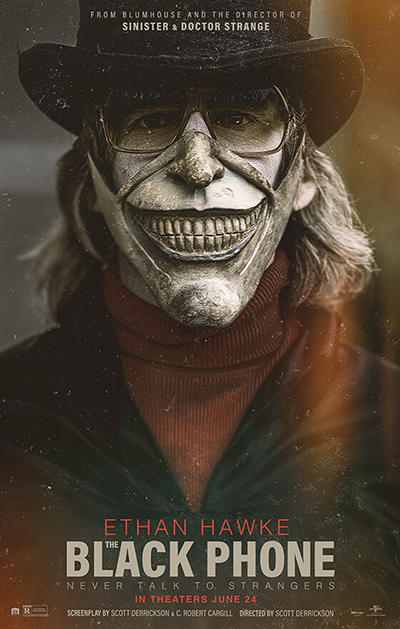
The Black Phone is now out on Blu-ray, DVD and Digital.
